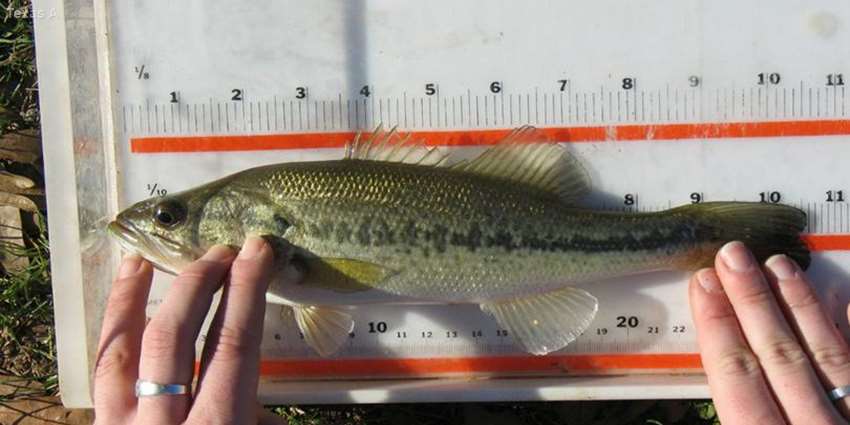Winter pond management can mean better fish production in the spring, according to a Texas A&M AgriLife Extension Service specialist.
Dr. Billy Higginbotham, wildlife and fisheries specialist, said there are several important winter management tips to consider for pond owners who want to produce good fishing in their private impoundments.
Typically, in East Texas, higher precipitation rates in winter months often lead to many stock ponds catching new water from their watersheds, he said.
“This can change the pond’s water chemistry, and if the pond is located on acidic soils, a water test should be conducted in January to determine agricultural limestone needs,” he said.
Ponds typically need lime when the pH is below 6 and they have a total alkalinity reading of less than 20 parts per million, Higginbotham said. A pH level of 6.5-8.5 is desirable for fish production.
The lower the alkalinity, the more agricultural limestone is required, he said.
Higginbotham said applications vary from 1-4 tons of lime per surface acre. Landowners should apply the lime as evenly as possible over the surface via boat or barge or dump the lime at the upper end of the pond to allow distribution by natural water flow.
All AgriLife Extension county agents in the acid soil region of East Texas can perform the pH and total alkalinity tests for area pond owners, he said.
If agricultural lime is required, Higginbotham said applications should be made between January and March to give the lime time to react prior to spring fertilization in April.
Supplemental feeding activity slows greatly when water temperatures decline, he said. He recommends turning off automatic feeders and only supplying measured amounts at specific times to ensure fish are eating supplemental feed.
“The rule of thumb is to not feed if the fish are not eating,” he said. “Switch to offering a little feed in late afternoons after several warm sunny days in a row. The fish will not feed as vigorously as they did back in September, but a little supplemental feed throughout the winter will keep the fish in good condition going into the spring growing season.”
Overfeeding leads to wasted money and possibly a change in water chemistry as feed decomposes, he said.
If aquatic weeds were problematic during the summer, they will surely return as the weather warms this spring, Higginbotham said. If possible, he recommended pulling samples of weed growth and having it identified for control recommendation purposes.
“Have the samples analyzed by a county AgriLife Extension agent, fisheries biologist or consultant so appropriate biological, chemical and mechanical control options can be considered,” he said. “Depending on the plant species, weed control efforts generally can be initiated in April.”
This is also an excellent time to review catch records from throughout 2016 to determine if the pond is moving in the right direction to achieve production goals for fishing, Higginbotham said.
“If you were unhappy with what you were catching in 2016, nothing will change in the new year unless you take the appropriate management steps to correct problems,” he said. “Catch records cost nothing and data such as length and weight of all largemouth bass caught as well as information on other key species such as catfish, bluegill and crappie help chart the course for future recommendations.”
Read the entire article at AgriLife TODAY for more information.

